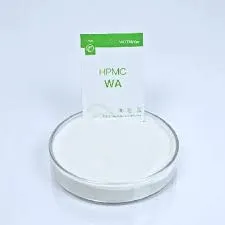
јул . 26, 2024 16:19 Back to list
Understanding Potential Side Effects of Hydroxypropyl Methyl Cellulose in Various Applications and Uses
Understanding the Side Effects of Hydroxypropyl Methylcellulose
Hydroxypropyl methylcellulose (HPMC) is a semi-synthetic polymer derived from cellulose, widely used in various industries, including food, pharmaceuticals, and cosmetics. Its properties as a thickening agent, emulsifier, and stabilizer make it a popular ingredient in many products. While HPMC is generally considered safe and well-tolerated, it is essential to understand its potential side effects, especially for individuals with specific sensitivities or underlying health conditions.
Gastrointestinal Effects
One of the most commonly reported side effects of HPMC is its impact on the gastrointestinal (GI) tract. As a cellulose derivative, HPMC can act as a laxative. While it is used in controlled amounts to facilitate digestive health, excessive consumption may lead to gastrointestinal discomfort, including bloating, gas, constipation, or diarrhea. Individuals with conditions such as irritable bowel syndrome (IBS) or those prone to digestive issues should monitor their intake of products containing HPMC.
Allergic Reactions
Although relatively rare, some individuals may experience allergic reactions to HPMC. Symptoms of an allergy could include rashes, itchiness, hives, or respiratory issues. If any signs of an allergic reaction occur after consuming or using a product containing hydroxypropyl methylcellulose, it is crucial to seek medical attention immediately. Conducting a patch test before using new cosmetic products that contain HPMC can also be a prudent approach for individuals with known sensitivities.
Eye Irritation
In the pharmaceutical industry, HPMC is often used as a lubricant in eye drops and contact lens solutions. While it serves this purpose effectively, individuals might experience temporary symptoms of irritation, such as redness, itching, or a burning sensation, upon exposure to HPMC-containing eye products. If these symptoms persist or worsen, it is advisable to consult an eye care professional.
hydroxypropyl methyl cellulose side effects

Respiratory Issues
Inhalation of hydroxypropyl methylcellulose dust—often a risk in industrial settings—can lead to respiratory problems such as coughing, wheezing, and shortness of breath
. People with pre-existing respiratory conditions, such as asthma or chronic obstructive pulmonary disease (COPD), should take caution when around airborne HPMC and consider using protective measures, such as masks or respirators, if working in environments where dust is prevalent.Impact on Sugar Levels
Another noteworthy point is that HPMC is sometimes added to diet foods due to its ability to create a feeling of fullness. Although generally safe, individuals with diabetes or those who monitor blood sugar levels should be aware that changes in food formulations can sometimes lead to unexpected effects on glycemic control. It is advisable for such individuals to consult with healthcare providers regarding the incorporation of HPMC into their diets.
Conclusion
In summary, while hydroxypropyl methylcellulose is widely regarded as safe for use in a variety of products, potential side effects may occur. Gastrointestinal discomfort, allergic reactions, eye irritation, respiratory issues, and effects on blood sugar levels are some of the notable risks associated with HPMC. Individuals with pre-existing health conditions or sensitivities should exercise caution and consult healthcare professionals when incorporating products containing HPMC into their routines.
As research continues and public awareness increases, consumers can make informed decisions regarding the use of hydroxypropyl methylcellulose. Understanding both its benefits and its potential side effects is vital to optimizing health and wellbeing while utilizing this versatile compound.
-
The Widespread Application of Redispersible Powder in Construction and Building Materials
NewsMay.16,2025
-
The Widespread Application of Hpmc in the Detergent Industry
NewsMay.16,2025
-
The Main Applications of Hydroxyethyl Cellulose in Paints and Coatings
NewsMay.16,2025
-
Mortar Bonding Agent: the Key to Enhancing the Adhesion Between New and Old Mortar Layers and Between Mortar and Different Substrates
NewsMay.16,2025
-
HPMC: Application as a thickener and excipient
NewsMay.16,2025
-
Hec Cellulose Cellulose: Multi functional dispersants and high-efficiency thickeners
NewsMay.16,2025







